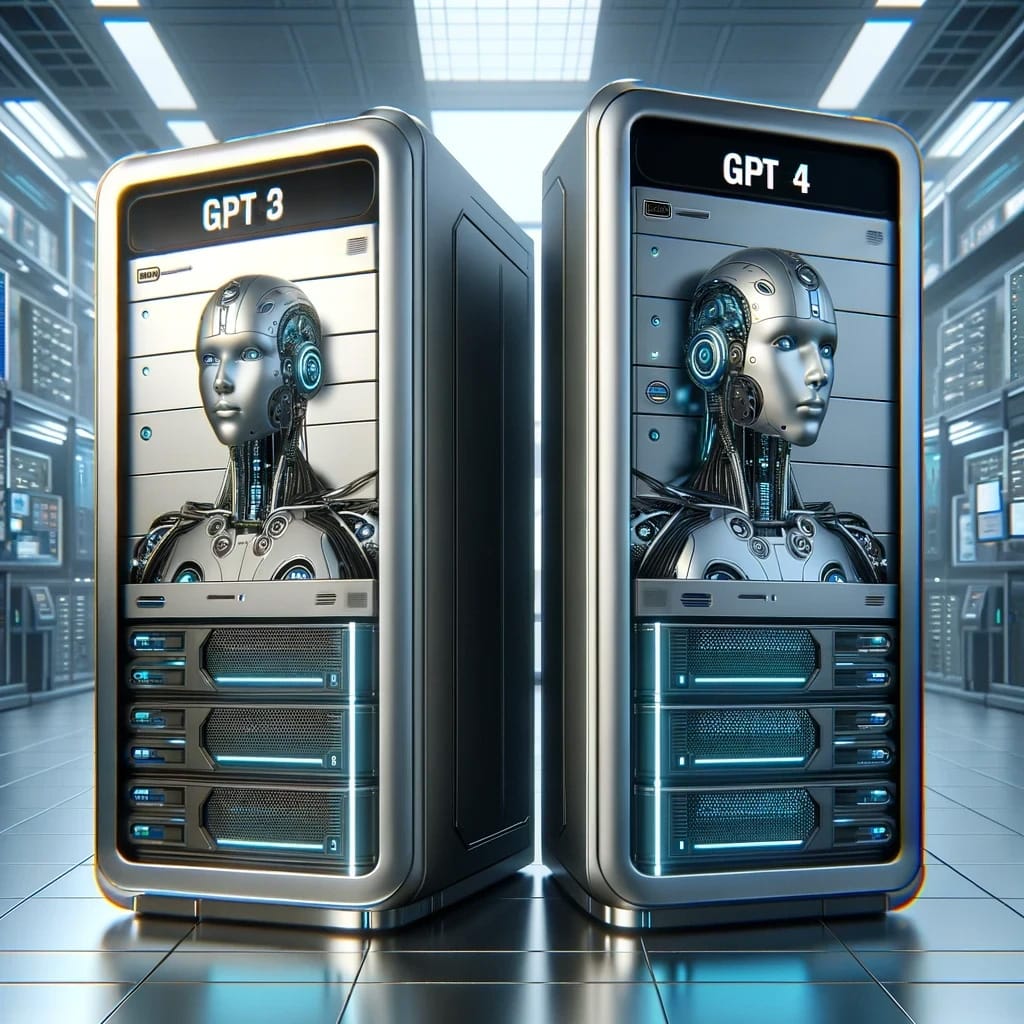The Evolution of AI-Language Models: GPT-3.5 vs GPT-4

GPT-4 has already been released a while back (March 14, 2023 to be exact), promising consumers with even more advanced capabilities. But how is it different from GPT 3.5?
Concepts and Overview
OpenAI is a research and deployment company that focuses on AGI, or artificial general intelligence. They have developed AI models such as GPT-3.5 and GPT-4.
What is GPT? Generative pre-trained transformers. They are machine learning models designed for natural language processing.
GPT is essentially an AI-powered large language model (LLM). An LLM enables human-like conversation. LLM's are typically defined by parameter count and training size. A larger parameter count generally equates to a model with increased complexity and adaptability (at the expense of requiring more computation and memory). As for training data, it is not only about quantity, but quality as well.
(For clarity, ChatGPT, developed by OpenAI as well, is a chatbot powered by GPT.)
Differences Between GPT-3.5 and GPT-4
The following table summarizes some differences between the two models.
|
Feature |
GPT-3.5 |
GPT-4 |
|
Parameter Count |
175 billion |
1 trillion |
|
Training Data |
Up to 2021, diverse internet text |
Up to 2023, expanded and more diverse corpus |
|
Practical Uses |
Suitable for general content generation |
Excels in complex tasks like coding |
|
Plugin Access |
No |
Yes |
|
Accuracy |
Fair |
High |
Because of the increased model size, GPT-4 can write more complex code, solve more complex problems, and learn quicker.
Based on OpenAI's findings, the image below captures how GPT-4 ranked in a much higher percentile in a test-taking scenario compared to GPT-3.5.

Summarizing GPT-4
In a nutshell, on GPT-4:
- Accepts both text and image inputs, and generates text outputs.
- Boasts 1 trillion parameters (vs. 175 billion for GPT-3.5).
- Can handle more complex tasks and generate more accurate responses because of the larger training dataset.
- Handles longer text passages and maintains coherence.
- Downside is the increased computational power requirements.
GPT-4 is 82% less likely to respond to requests for disallowed content and 40% more likely to produce factual responses than GPT-3.5 based on OpenAI's internal evaluations (source).
In addition to being more powerful in analysis and feedback, OpenAI GPT-4 gives an edge over earlier versions by allowing access to various plugins.
Conclusion
Many platforms provide AI features; some are paid, and others are still in the experimental phase. ChatGPT from OpenAI was one of the first to market (launched November 30, 2022), but others are catching up, such as Google Bard, Claude, and Perplexity.
The race is far from over and the future looks bright!
References
- https://openai.com/index/gpt-4
- https://www.howtogeek.com/882274/gpt-3-5-vs-gpt-4/
- https://medium.com/@greg.broadhead/a-brief-guide-to-llm-numbers-parameter-count-vs-training-size-894a81c9258
- https://techcommunity.microsoft.com/t5/ai-azure-ai-services-blog/comparing-gpt-3-5-amp-gpt-4-a-thought-framework-on-when-to-use/ba-p/4088645

